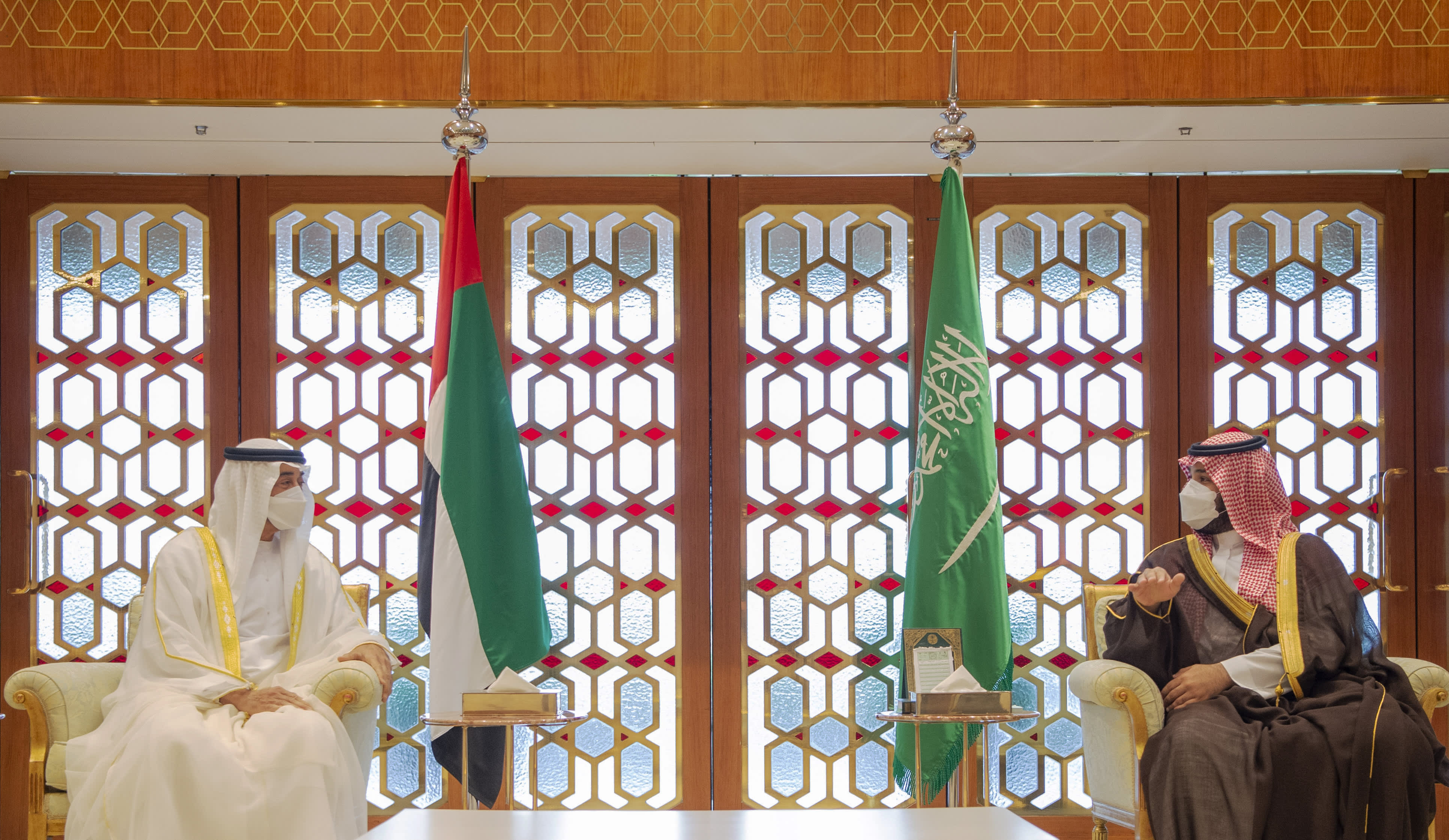DUBAI, United Arab Emirates — The unexpected rift between Saudi Arabia and the United Arab Emirates within OPEC in early July came as a shock to many in the Gulf region and those watching from abroad.
The dispute over oil production levels temporarily froze the group’s ability to lay out their plans for the markets, sending crude prices upward. But it wasn’t the first appearance of tension between the Arab neighbors and longtime close allies, and likely will not be the last, experts who’ve long been watching the region say.
“What is happening here is these are the two biggest economies in the region, in the Arab world,” Abdulkhaleq Abdulla, a political science professor in the UAE, told CNBC. “And as Saudi Arabia wants to reform its economy, privatize, etc, there is bound to be competition between them.”
“Competition between the two biggest Arab economies is, I think, just starting,” Abdulla said. “And it is bound to intensify in the days to come.”
Conflicting interests
The strategic alignment between Riyadh and Abu Dhabi, both of which have become increasingly active on the world stage, is evident in many areas. And it’s often associated with what is said to be a close relationship — some have even called it a “bromance” — between Saudi Crown Prince Mohammed bin Salman and his Emirati counterpart Mohammed bin Zayed.
But conflicting interests have cropped up in recent months that preceded the OPEC rift. In February, Saudi Arabia announced that its government would cease doing business with any international companies whose regional headquarters were not based within the kingdom by 2024. The move was widely seen as targeting Dubai, the Middle East’s current headquarters hub.
DUBAI, United Arab Emirates — The UAE last year announced a normalization deal with Israel, becoming the first Gulf country to do so, while Saudi Arabia has so far publicly refused to do the same. Saudi Arabia meanwhile has been working on a tentative rapprochement with rival Sunni power Turkey, with which the UAE has significant tensions as Ankara supports an Islamist ideology that Emirati leaders see as a threat.
And the two Gulf powers had some diverging interests in the war in Yemen, despite being on the same side, with the Saudis supporting an Islamist party distrusted by the UAE and Abu Dhabi supporting separatist tribes that did not align with Riyadh’s goals. The UAE drew down its military activity in Yemen in 2019, while Riyadh remains embroiled in the conflict.
“It has been a common assumption that the UAE and Saudi Arabia have effectively indistinguishable worldviews and interests — that the UAE is sort of an appendage or dependency of Saudi Arabia,” Hussein Ibish, a senior resident scholar at the Arab Gulf States Institute in Washington, wrote in a blog post in July. “That has never been the case.”
Economic consequences
In early July, Saudi Arabia upped the ante by ending preferential tariffs for goods made in free zones or affiliated with Israeli manufacturers, also seen as a direct shot at the UAE, which is the free zone hub of the region. The move was followed by waves of patriotic Saudis launching a campaign via Twitter to boycott Emirati goods.
This came despite the fact that the UAE is Saudi Arabia’s second-largest trading partner after China by import value.
“The idea once was to create a GCC market, but now there’s the realization that the priorities of Saudi Arabia and the UAE are very different,” Amir Khan, senior economist at Saudi National Bank, told Reuters in July. “This regulation is putting flesh on the bone of these political divergences,” Khan said.
So, where do things go from here?
An OPEC deal was reached in mid-July, and the Saudi and Emirati energy ministers praised each other and the work of the group of oil producers. Still, economic competition — at a time where returns for oil-producing nations are extremely volatile — isn’t set to go away anytime soon.
“We’re coming out of this pandemic where every country in the world needs to figure out a way to economically recover,” Tobias Borck, a research fellow specializing in Gulf affairs at the Royal United Services Institute in London, told CNBC. “But for the Gulf monarchies, especially for Abu Dhabi and Saudi Arabia, that is compounded by the fact that they are also under pressure to figure out a way to transform their economies and get away from relying on oil.”
“In that environment, quite frankly, everyone is going to look after number one,” Borck continued. “And for all the genuine friendship and continued pragmatic alignment, when it comes to economic matters, at some point that friendship ends and it becomes about looking after yourself.”
A ‘collision course’
For the Emirati professor Abdulla, “rivalry is too strong of a term” to describe what’s going on between the two countries.
“It could be a controlled, managed, friendly competition,” he told CNBC. “Or it could get out of hand, and we will see it intensify in the months and years to come. We are still in the first five minutes of the competition. We don’t know how it is going to evolve — and it might have some impact on the political issues that bind the two countries together, some political spillover.”
“There are clearly multiple areas where they are on a collision course in the economic sphere,” Borck said. “You’ve now sort of put your position out, and at the moment, those positions are on a collision course. Whether they’re going to remain so? We’ll see.”
